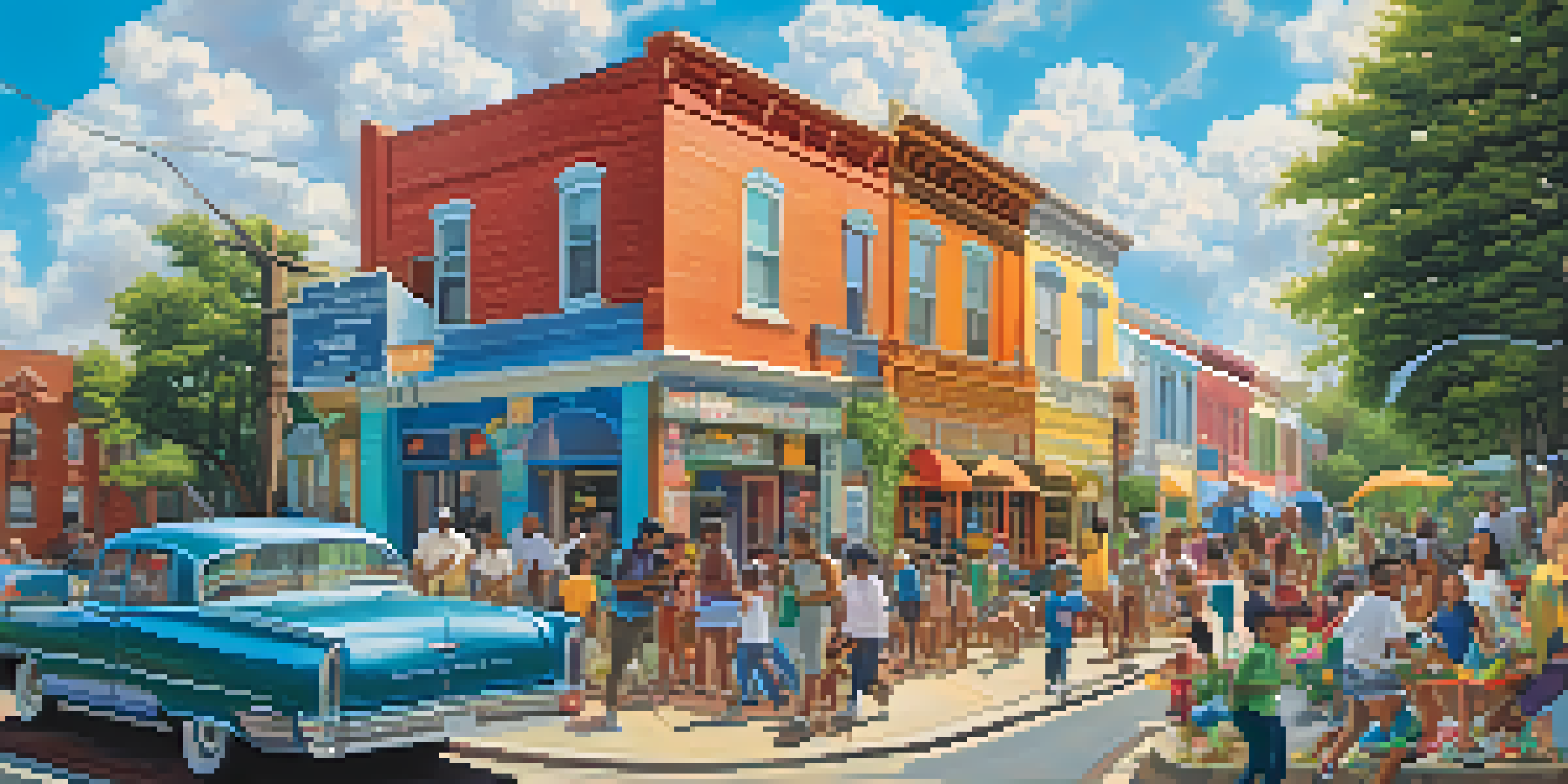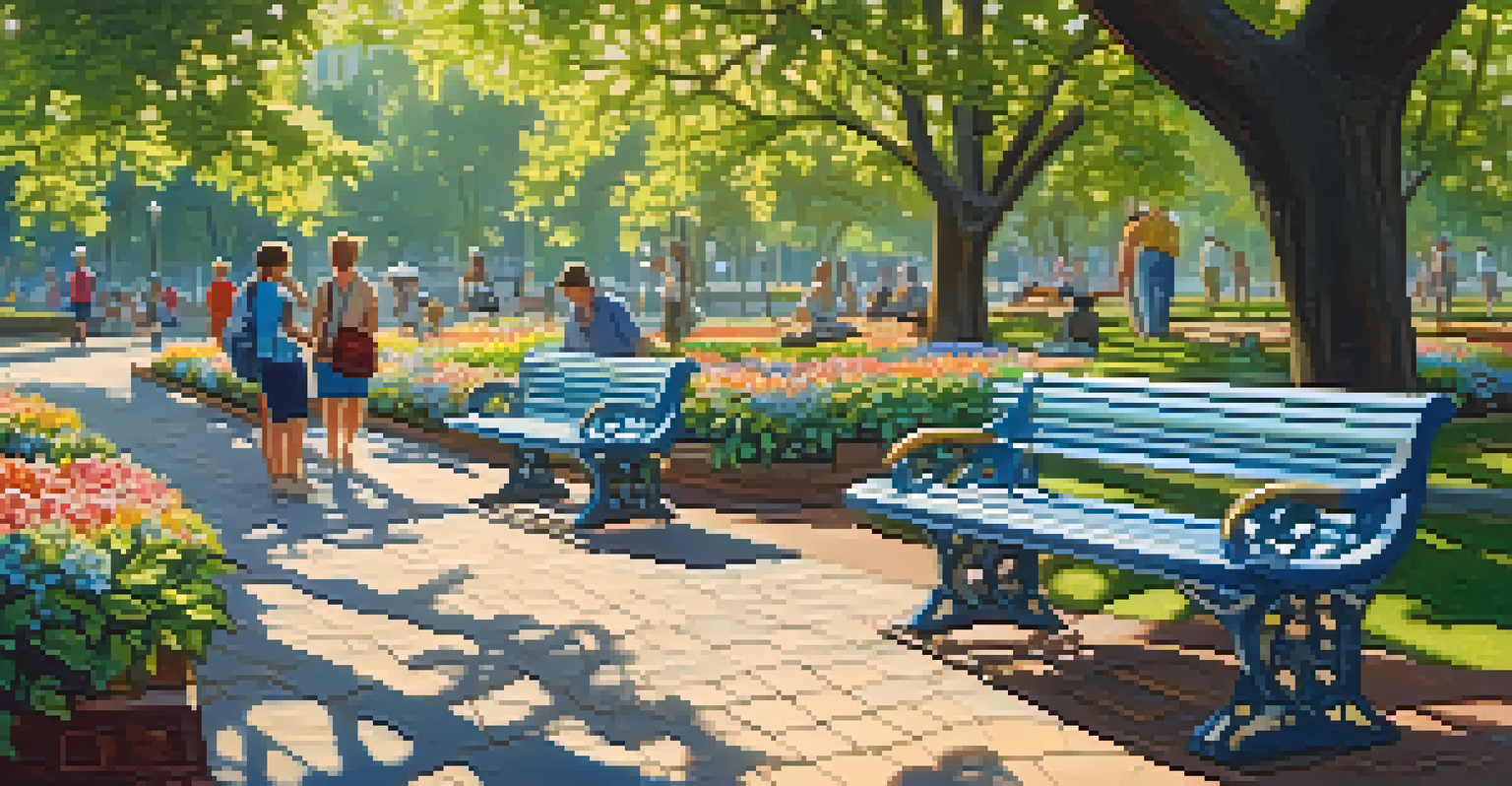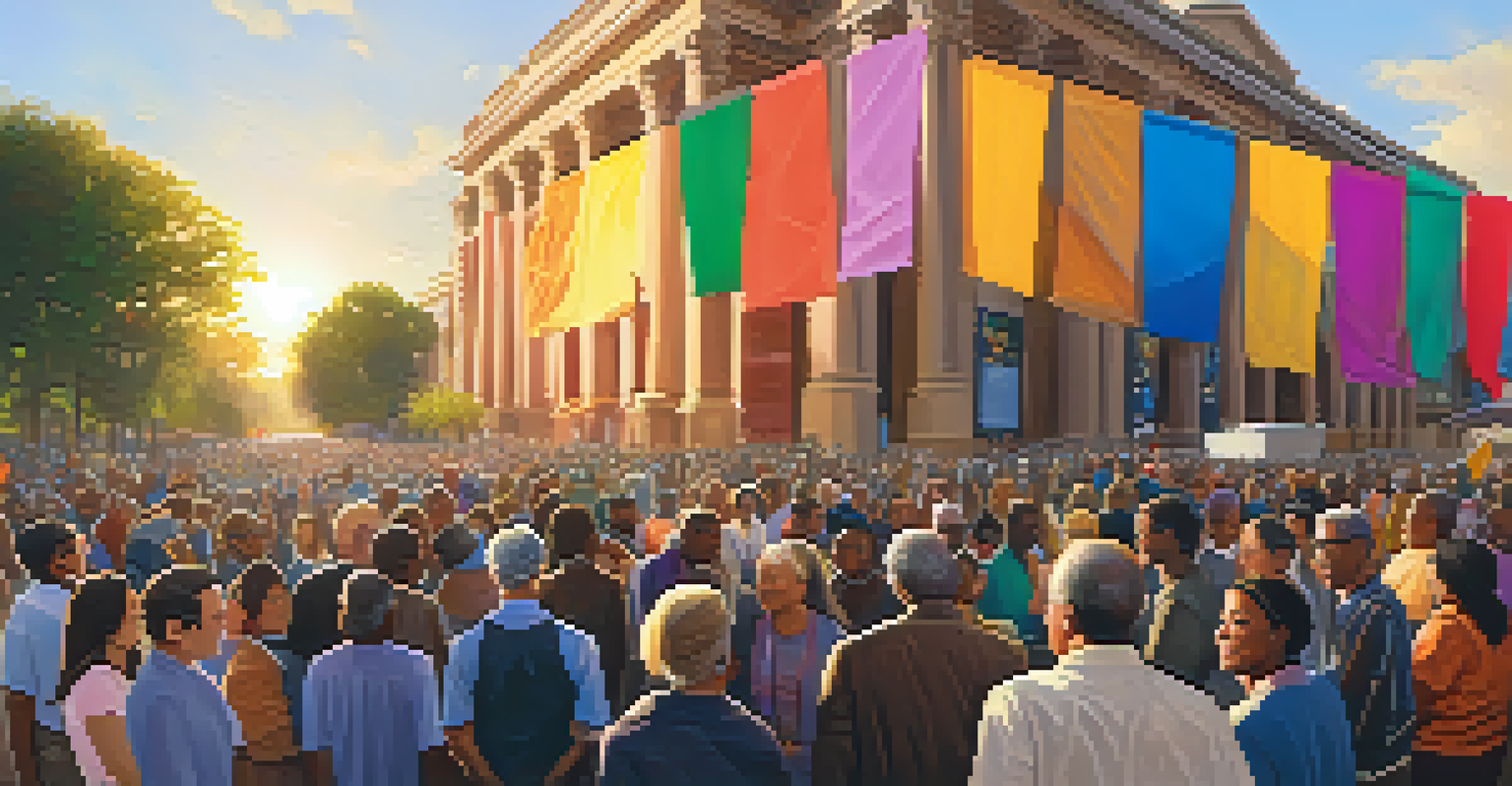Art in Public Spaces: Fostering Community Engagement and Pride

The Role of Public Art in Community Identity
Public art acts as a mirror reflecting the values and history of a community. It can transform a mundane space into a vibrant representation of local culture, helping residents feel a sense of belonging. Think of a mural that tells the story of a neighborhood or a sculpture that celebrates a local hero; these pieces resonate deeply with the people who encounter them.
Public art can transform a neighborhood, creating a sense of identity and pride among its residents.
When communities collaborate on public art projects, they engage in a shared creative process that strengthens bonds among residents. This not only enhances local identity but also promotes inclusivity, as diverse voices contribute to the artistic vision. An art piece created through community input is often more cherished and respected than something imposed from outside.
Moreover, public art can serve as a catalyst for discussions about community values and priorities. By showcasing themes relevant to the populace, such as sustainability or social justice, art installations can inspire dialogue and action, encouraging residents to unite around common goals.
Enhancing Public Spaces Through Creativity
Public art has the power to breathe life into otherwise neglected areas. A simple park can become a beloved gathering space when adorned with colorful sculptures or interactive installations. These enhancements not only beautify the environment but also encourage people to spend more time outdoors, fostering a sense of community.

Consider the impact of a well-placed bench decorated with mosaic tiles, inviting passersby to sit and take a moment to appreciate their surroundings. Such creative touches can transform ordinary settings into extraordinary experiences, making public spaces more inviting and engaging.
Public Art Enhances Community Identity
Public art reflects local values and fosters a sense of belonging among residents.
Furthermore, creative elements in public spaces can boost local businesses by attracting visitors who come to admire the art. This increased foot traffic can lead to greater patronage of nearby cafes, shops, and galleries, ultimately benefiting the entire community.
Public Art as a Tool for Social Change
Art in public spaces often tackles important social issues, helping to raise awareness and inspire change. Murals depicting themes like equality, environmentalism, or mental health can initiate conversations that might be uncomfortable but necessary. By bringing these topics into the open, public art acts as a powerful platform for advocacy.
Art is the most beautiful of all lies; it is a reflection of our culture and identity.
For example, a mural addressing climate change can motivate community members to engage in sustainability efforts. When art ignites passion and purpose, it encourages individuals to take action, whether through community clean-ups or educational workshops.
Moreover, art can serve as a unifying force, bringing together diverse groups to rally around a shared cause. This collective effort not only strengthens community ties but also empowers individuals, transforming them into active participants in shaping their environment.
The Economic Benefits of Public Art
Investing in public art can yield significant economic returns for communities. Art initiatives often attract tourism, drawing visitors eager to experience unique installations and cultural landmarks. This influx of tourists can lead to increased revenue for local businesses, creating a win-win situation for everyone involved.
Furthermore, public art projects can create jobs for local artists, artisans, and contractors. By prioritizing local talent, communities can stimulate their economy while showcasing the skills and creativity of their residents. This focus on local resources fosters pride and ownership within the community.
Art Boosts Local Economies
Investing in public art attracts tourism and stimulates local businesses, benefiting the entire community.
Additionally, cities that prioritize public art often see an increase in property values. Neighborhoods rich in artistic expression tend to attract more residents, leading to vibrant, thriving communities that are sought after by homebuyers and renters alike.
Art as a Catalyst for Community Engagement
Public art not only beautifies spaces but also invites community involvement. Projects that involve residents in the creation and maintenance of art foster a spirit of ownership and pride. When people contribute their time and talents, they develop a deeper connection to their surroundings.
Workshops, community meetings, and collaborative projects can transform the way residents perceive their neighborhoods. For instance, painting a community mural together can create a sense of accomplishment and unity among participants, making them more likely to engage in future community activities.
Moreover, public art events, such as festivals or unveiling ceremonies, can serve as vibrant community gatherings. These occasions provide opportunities for people to meet, share stories, and celebrate their collective identity, reinforcing social ties and community spirit.
Preserving Cultural Heritage Through Art
Public art plays a crucial role in preserving and celebrating cultural heritage. By honoring historical events, traditions, and local narratives, art installations can keep the stories of a community alive for future generations. This preservation fosters a sense of pride and connection to the past.
Consider a statue that commemorates a significant figure from local history; such an installation not only educates residents but also instills a sense of pride in their heritage. This connection can inspire younger generations to learn about and appreciate their roots.
Art Promotes Social Change
Public art addresses social issues, sparking important conversations and inspiring collective action.
Furthermore, public art can serve as a bridge between diverse cultures within a community, promoting understanding and respect. By showcasing different artistic styles and traditions, public spaces can celebrate the richness of cultural diversity, fostering a more inclusive environment.
Challenges and Opportunities in Public Art Projects
While the benefits of public art are clear, challenges often arise in the implementation of projects. Budget constraints, differing community opinions, and bureaucratic hurdles can hinder progress. However, these obstacles also present opportunities for creative problem-solving and collaboration.
Engaging the community in the planning process can help address potential concerns and ensure that the art reflects the values and desires of residents. Open dialogues can lead to innovative solutions that satisfy various stakeholders while keeping the project on track.

Moreover, the challenges faced in public art projects can inspire resilience and adaptability. By navigating these hurdles together, communities can strengthen their bonds and emerge with a renewed sense of purpose, proving that art truly has the power to unite and inspire.